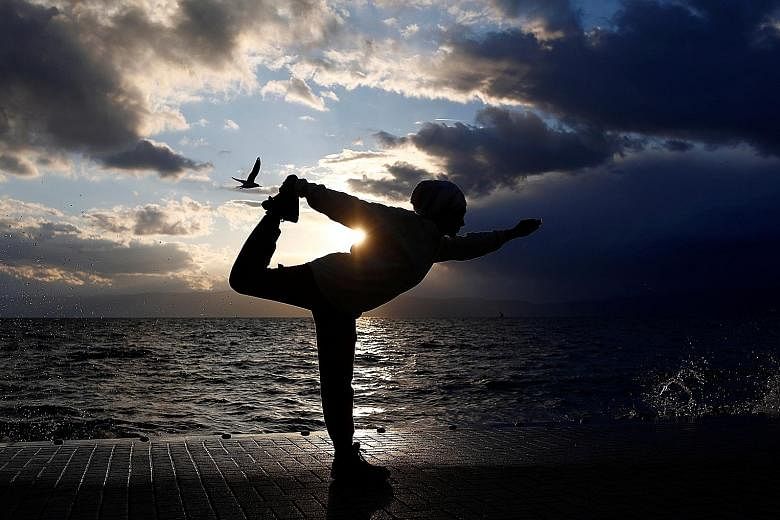If you are one of those who cannot touch your toes and struggle to extend a body part without feeling like you are about to break, improving your flexibility should rank high on your agenda.
As we age, our joints get stiffer, limiting our range of motion. That decline in mobility may affect day-to-day activities, such as bending down to pick up a fallen object, retrieving something overhead, or even reaching behind to zip your dress.
Plus, when you are flexible, you will be able to perform better at any sport, be it running or weightlifting, go deeper into yoga poses, and reduce your risk of workout-related injuries.
While you do stretching exercises to improve your flexibility - whether for your upper back, chest and shoulders, or hamstrings, keep these safety tips in mind.
WARM UP BEFOREHAND
Muscles contract when they are cold but when they are warm, they are much more malleable.
This is also why people find it easier to stretch when they are in a hot room or a hot climate.
Do some easy warmup exercises to ease yourself into stretches that can be too deep or even painful if you do them all of a sudden.
When you are stretching, always start slow and build up the intensity gradually.
DO NOT HOLD POSES FOR TOO LONG
Yin yoga (where passive stretches are held for a few minutes at a time) is great for relaxation, but if you go into a pose suddenly or if you push yourself too hard, holding it for such a long time can cause more harm than good.
While it is great to push yourself to stretch further than usual, long and intense stretches can cause over-stretching, which will cause muscle pain and tightness.
GET OUT OF POSES WITH CONTROL
Letting go of your body and suddenly flopping onto your mat can cause more issues than just the noise it creates.
When you are in a pose, your body is stretched, and your muscles are engaged to hold you in place.
Just letting go causes your muscles and bones to quickly return to their normal position without warning. This can cause strains, tears, pulls, or injuries. It is all about moving with control.
KNOW YOUR BOUNDARIES
It is important not to push yourself too far. You should strive to go slightly more than your last session, but remember that progress requires practice. Move into poses only to an extent where you feel a stretch, not a painful pull. It is difficult, and dangerous, to go into a front split right away if you could never do it before. This can cause hamstring pulls and knee pain.
GO SLOW AND STEADY
Learn to synchronise your breathing with stretching. Control your breath and move slowly. Instead of pushing your body in a quick jerking motion, use your exhales to ease yourself into the stretches.
• This article first appeared in www.shape.com.sg

